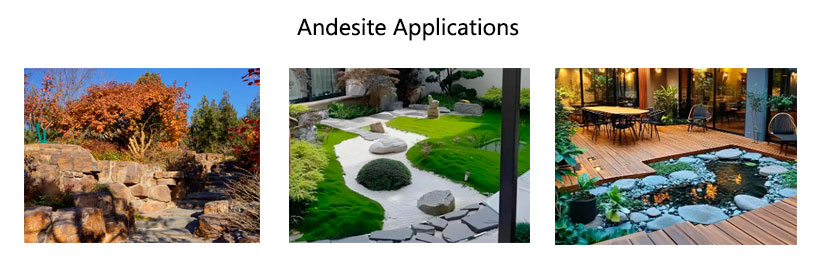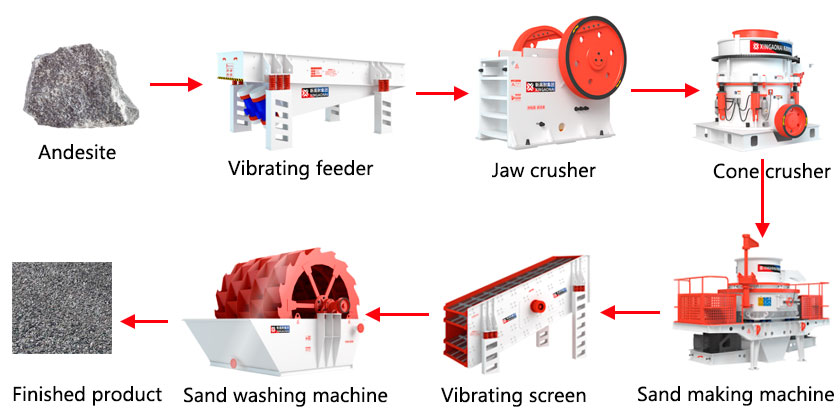
 Xingaonai
Xingaonai

Andesite is an extrusive volcanic rock, the main components of which are diorite and pyroxene, with good chemical stability and physical and mechanical properties. Andesite has rich colors and diverse patterns, and its texture is also very hard, so it is widely used.

Andesite's Mohs hardness is usually between 6-7, with high hardness and strong compressive resistance, between hard rock and soft rock. Therefore, there are many factors that affect the hardness of andesite, which depends on the specific composition and degree of crystallization, and cannot be specifically classified as hard rock or soft rock.

Andesite has a Mohs hardness of 6-7, a density of 2.5 to 3.3g/cm³, and a compressive strength of 100-300 MPa. It generally appears gray-green, lavender, purple-red, etc., and is mainly composed of pyroxene, chlorite, plagioclase, amphibole, etc., and the secondary minerals are mainly iron oxides and apatite. The blocky structure has pores, and the pores are often filled with quartz, chlorite, calcite, etc.
1. It has high strength, hardness, and good stability, and will not be damaged by environmental changes.
2. It has rich colors and diverse textures, and can be selected according to different environments and designs.
3. It has good corrosion resistance and frost resistance, and can adapt to various harsh environments.

Stone landscape garden: Andesite has geological hardness and corrosion resistance, and it can be exposed to wind and sun for a long time and still maintain its beauty.
Garden design: Andesite is used in garden design, paving the ground and building decorative stone carvings and stone columns.
Waterscape design: The beauty and durability of andesite can be used as a common material in waterscape design. It is used to build decorative materials such as rockery waterfalls and pool edges to add natural charm to the landscape.
Garden design: Andesite is designed and often used to create flower beds, garden styles, etc. Its strong and durable characteristics support the growth of garden plants and complement the flowers and plants to create the colors of nature.

The main production process of andesite is divided into three stages: coarse crushing, medium and fine crushing, and sand making and shaping.
Coarse crushing: The vibrating feeder evenly transports the material to the jaw crusher for coarse crushing. After coarse crushing, the material is screened by the vibrating screen. Qualified materials are crushed in medium and fine crushing, and unqualified materials are returned to the jaw crusher for re-crushing.
Medium and fine crushing: The coarse crushed materials transported are crushed in medium and fine crushing by the cone crusher, and then screened by the vibrating screen. The materials larger than 40mm are returned to the cone crusher for re-crushing.
Sand making and shaping: Qualified medium and fine materials are sent to the sand making machine for crushing and shaping, materials larger than 20mm are returned for re-crushing, and materials smaller than 20mm are washed with a sand washer.
Author: Xingaonai
Reprint address: https://www.xgncrusher.com/Industralnews/Hardness-characteristics-and-applications-of-basalt-9.html
Our products have been exported to over 170 countries in Africa, Asia, South America, Europe, etc.We are here to prodvide better products and service for you.
Copyright © 2016-2030 Xingaonai Group All Rights Reserved. Sitemap